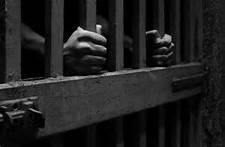Legal Definition of a Sexually Violent Predator
1) a person who has been convicted of certain offenses, including child molestation or rape, and
2) the person who has a diagnosed mental disorder, and
3) that mental disorder makes it likely that he or she will commit sexually violent acts in the future.
All three of those elements must be met before someone can be designated an SVP.
Legal Process to Designate Someone a Sexually Violent Predator

Once he is designated an SVP, the person can go to trial. At a trial, a jury has to decide whether they are an SVP beyond a reasonable doubt.
If a jury finds the person to be an SVP, he or she is committed to the state hospital indefinitely, unless and until it is determined that he or she is no longer a danger to society.
An SVP designation is not considered punishment. Although the person must have previously committed a crime to be considered as an SVP, an SVP commitment is considered a civil commitment for the protection of society.
The civil commitment as an SVP happens after the person has served their time for the crime.




 RSS Feed
RSS Feed
